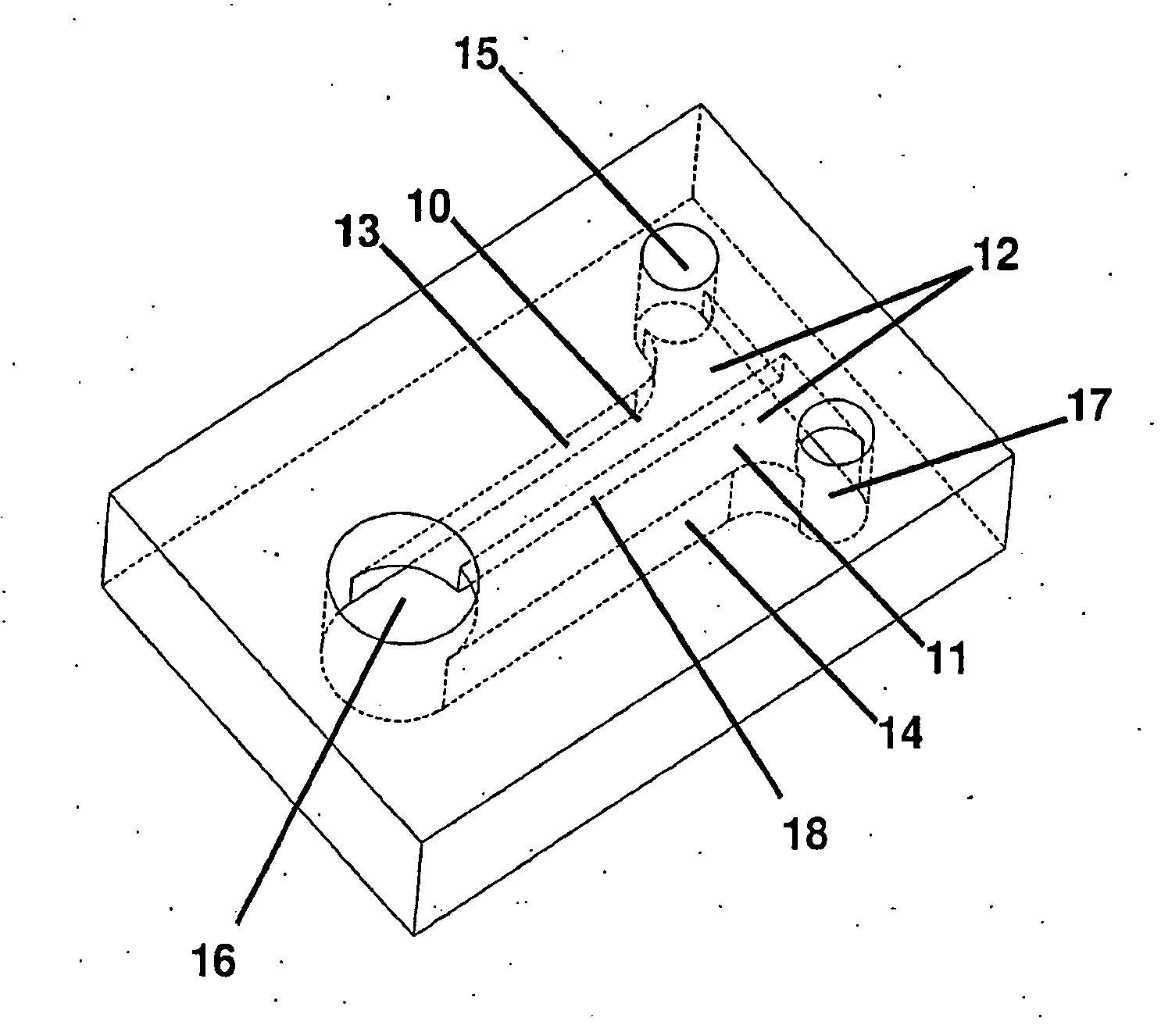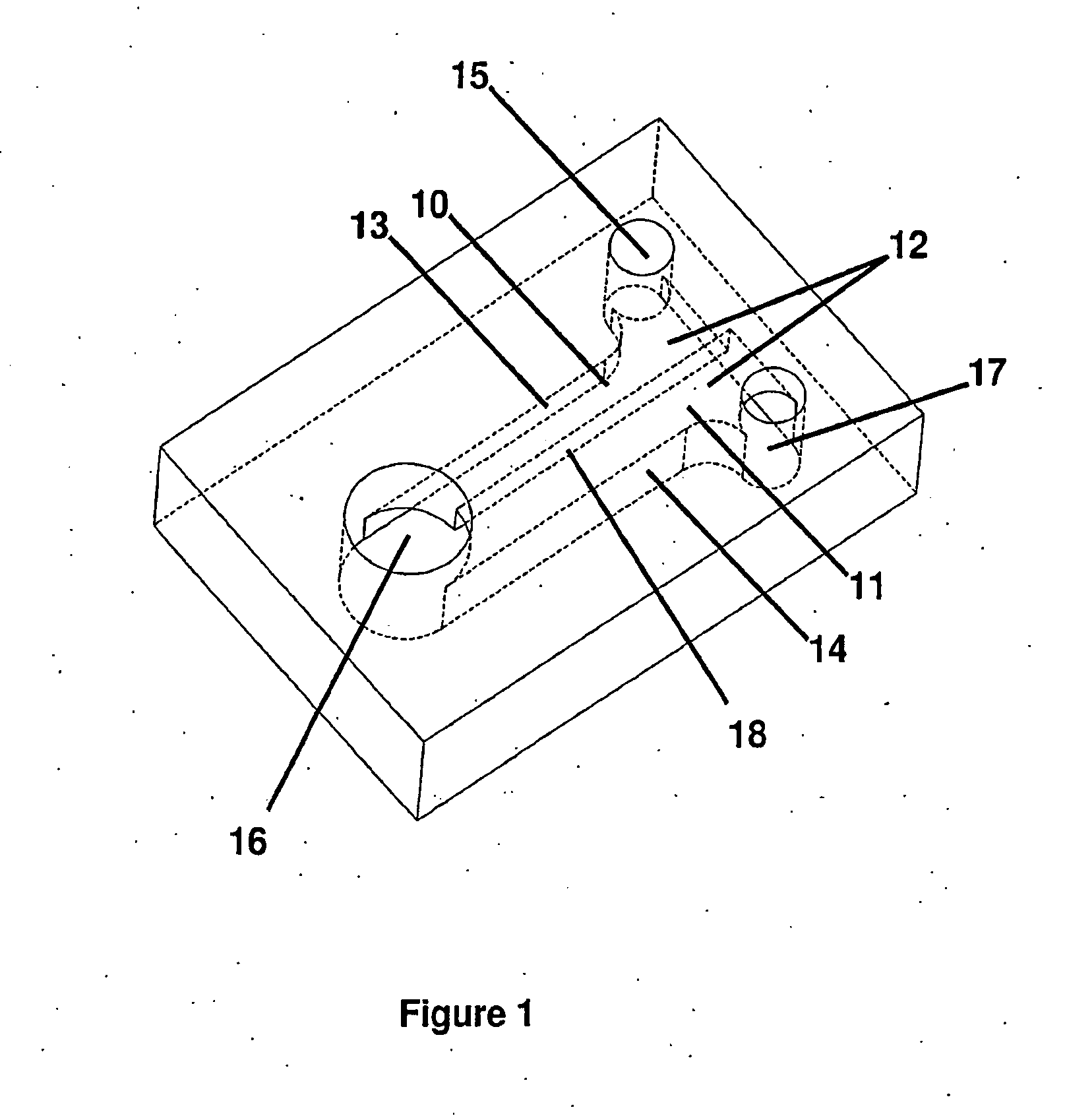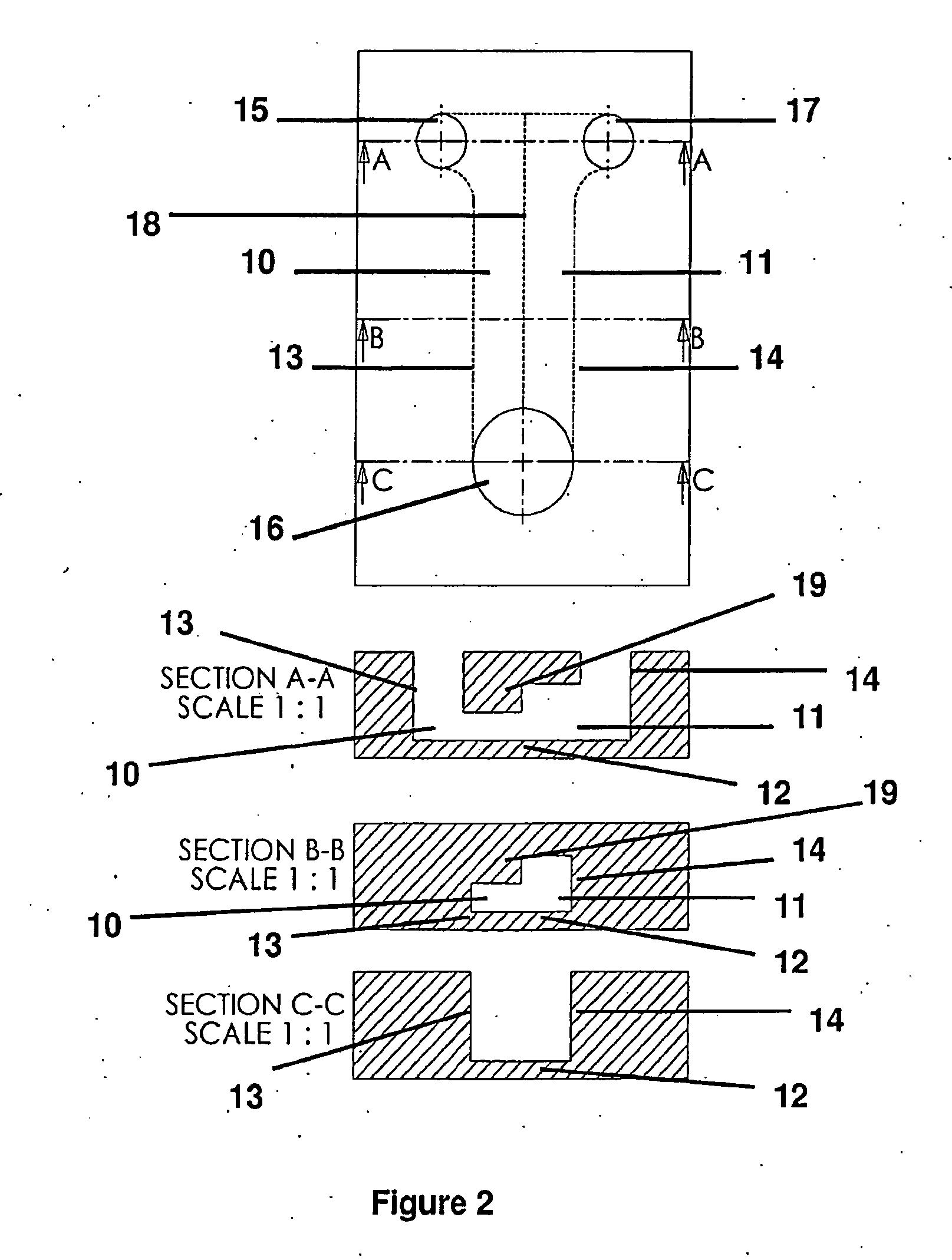Surface-tension based flow guidance in a microstructure environment
a microstructure environment and surface tension technology, applied in the field of microfluidics, can solve the problems of inability to replicate the process in traditional cell culture on flat plastic, intractable manufacturing, and high toxic
- Summary
- Abstract
- Description
- Claims
- Application Information
AI Technical Summary
Benefits of technology
Problems solved by technology
Method used
Image
Examples
example 1
[0051]The device and method described here may be utilized to construct an experimental model of tumor cell invasion. In vivo, the tumor cells are initially contained within a tumor mass, but as the tumors turn malignant, the cells develop the ability to break free of the tumor mass and invade into the surrounding connective tissue. One embodiment of this application would be a microfluidic structure where the first region would be prepared to contain a gel representing the connective tissue, and the second region would be prepared to contain cells representing the tumor. Since the gel can be made such that it initially has no cells, migration, or invasion, of cells into the gel is easily detected and quantified. The process can be quantified in terms of cell number reaching beyond a certain distance inside the region, or by a statistical analysis of cell location across the population. If the gel is collagen-I, the assay will enable an analysis of tumor cell migration through conne...
example 2
[0052]Another embodiment of this application involves the construction of a biological model assay where cells are sandwiched in between two layers of an extracellular matrix gel. The purpose of doing this is to provide the cells with a three-dimensional environment in which to grow. This type of arrangement has been shown to provide significant advantages over culturing the same cells on extracellular matrix-coated, rigid plastic surfaces (Montesani et al. 1983); this is applicable to multiple types of cells, including endothelial cells and hepatocytes. The basis for these advantages is believed to be due better resemblance to human tissues both in terms of biochemical and mechanical cues experienced by the cells. With respect to the technology presented in this provisional patent application, one region could be filled with the extra-cellular matrix (ECM) of interest, and allowed to gel. A second adjacent region could be filled with a cell suspension in cell culture media. With th...
example 3
[0053]The device and method presented here could be used to construct a co-culture or multiple cell types. It has become clear the many developmental and disease processes, including cancer progression, depend on inter-cellular communication. While cells can be mixed together there is often an advantage to segregating them into different regions; segregation eliminates need for artificial tags to label different cell types; while soluble signals may be required a random mixture may interfere with formation of important morphologies; often, as in the case of epithelium and stroma, the cell populations are segregated in vivo. The current invention could serve to provide two or more adjacent compartments where different cell types are seeded in three-dimensional gels or on two-dimensional surfaces.
PUM
 Login to View More
Login to View More Abstract
Description
Claims
Application Information
 Login to View More
Login to View More - R&D
- Intellectual Property
- Life Sciences
- Materials
- Tech Scout
- Unparalleled Data Quality
- Higher Quality Content
- 60% Fewer Hallucinations
Browse by: Latest US Patents, China's latest patents, Technical Efficacy Thesaurus, Application Domain, Technology Topic, Popular Technical Reports.
© 2025 PatSnap. All rights reserved.Legal|Privacy policy|Modern Slavery Act Transparency Statement|Sitemap|About US| Contact US: help@patsnap.com



